It's not just the presence, or lack of, female designers in the contemporary furniture industry, nor just the presence, or lack of, female designers in museum exhibitions that informs and influences understandings of the contribution of female designers to contemporary furniture design and the (hi)story of furniture design, it is also the presence, or lack of, female designers in design museum and applied arts museum collections, those depositories and reserves of furniture design's history and sources of inspiration for furniture design's future.
With the exhibition Female Traces the Museum of Furniture Studies Stockholm reflect on the gender mix of their own collection.
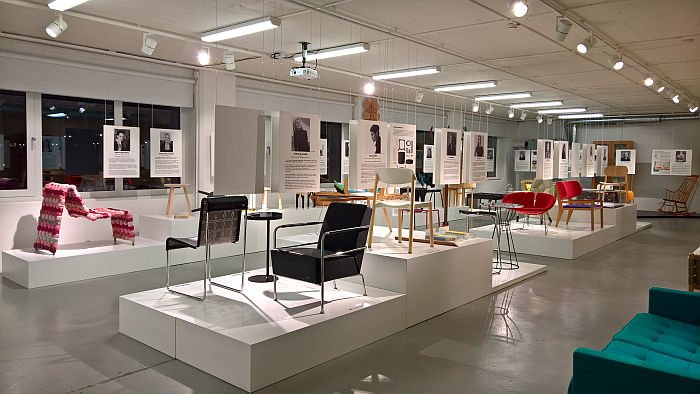
Cutting straight to the chase, the Museum of Furniture Studies' collection embodies a female:male ratio of ca 81:262. ca 1:3
Or put another way, from the 340+ designers represented in the collection, ca 23% are female
A ratio of which the museum's initiators, and collection owners, Kersti Sandin and Lars Bülow note, "det är inte tillfredsställande"
Is not satisfactory.
And it isn't really.
And is a cause for reflection.
Reflection which led the Museum of Furniture Studies to the exhibition Female Traces. And a self-reflection which could, should, must, lead to further, wider, reflections.
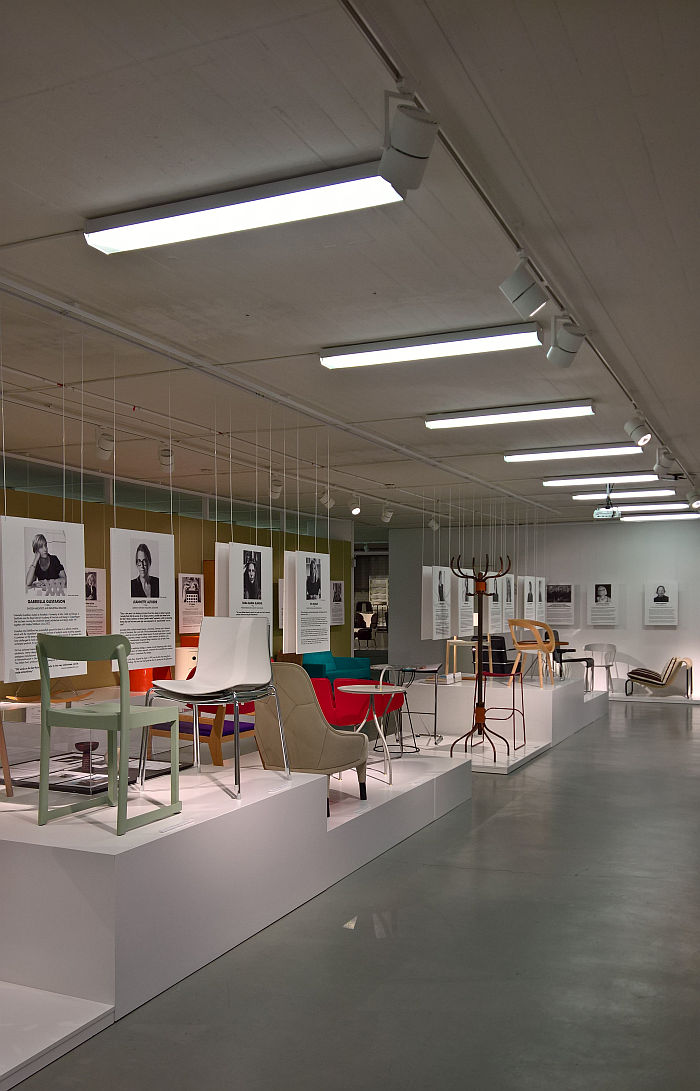
Although not an exhibition about the featured designers per se, the physical embodiment of Female Traces is a presentation of female designers; a presentation which, and as with the permanent exhibition next door, is staged as a, more or less, chronological tour starting in the early 20th century and winding its way slowly forward into the early 21st century. And which as it does highlights, underscores and provides a basis for discussion and reflection on the wider female traces in (furniture) design through the century past. For discussion and reflection on female traces in...
...furniture design. In context of a discussion on the contemporary furniture industry during the symposium A Woman's Work at the Kunstgewerbemuseum Dresden, one of the female designers present* stated that she didn't want to "go down the colour and fabrics route", and thus that well worn route, that well traced route, of female designers. Something underscored in Female Traces through mention of Le Corbusier's rebuff of Charlotte Perriand's first approach for work with a, one imagines curt, "Ici, on ne brode pas des coussins" "Here, we do not embroider cushions"; an understanding of the female role in design which also existed in the Women's Department a.k.a. the Weaving Workshop at Bauhaus Weimar; or in the person of a Ray Eames whose contribution to the Eames' canon is often reduced to colours and fabrics, despite the wealth of evidence that it was so much more. While today whenever a manufacturer launches a new colour and/or fabric version of an existing range, or a new range of cushions for an existing sofa, the chances are a female designer was responsible. Invariably one formally trained to, and more than capable of, designing an actual piece of furniture.
...the furniture industry. Of female furniture entrepreneurs as much as furniture designers: including Estrid Ericson who in 1924 established Svenskt Tenn, a key player in the development of inter and post-War Swedish design understandings, and a company which remains today a not irrelevant voice in Swedish interiors; Florence Knoll who not only led, defined, the Knoll Planning Unit that did so much to establish Knoll's reputation, but who following the death of her husband Hans in 1955 took over the running of Knoll; Marie Norell Möller, who following the death of her father Arne, took over, along with her mother Britta, the family business Norell Möbel, which Marie still runs today; or the Museum of Furniture Studies' Kersti Sandin who, together with Lars Bülow, established in 1992 the company Materia, today part of the Kinnarps group and one of Sweden's leading furniture manufacturers.
...interior design. A discipline which as the exhibition Home Stories at the Vitra Design Museum elucidates is a design discipline, is more than Alexander Girard's "slow motion movie of junk changing places", and a disciple influenced and advanced by the likes of Eileen Gray who with her own E.1027 house in Roquebrune-Cap-Martin, and also through projects such as her design for Madame Mathieu-Levy's apartment in Paris, realised some of the more relevant inter-War interiors; Lena Larsson who with the interior of the so-called Skal och kärna house at the 1955 Helsingborg exhibition, and its re-imaging of the domestic space as a family space rather than an adult space, helped evolve understandings of domesticity in the 1950s and 1960s; or Jenny Fingal & Eva-Johanna Isestig's ongoing research into the design of medical waiting rooms, for all in context of children/families, research under the title Den som väntar... The one waiting... and whose physical manifestation includes the ever charming split level sofa Du & Jag through NC Nordic Care. An object for any home as much as any medical waiting room.
...Swedish furniture design. Although a very international showcase Female Traces does, logically given the location of the museum, and pleasingly given the location of the museum, have an unmissable Swedish bias, including a great many Swedish designers who have worked with or for IKEA, a presence which gives the non-Swede an insight into IKEA's place in Swedish design, and includes, amongst others, Josefina Hägg Edenholm, a graduate of Carl Malmsten Furniture Studies Stockholm and who is employed in the IKEA design department; Eva Lilja Löwenhielm since 2019 Design Manager for IKEA and thus responsible for the future design direction of the firm; Marianne Hagberg who together with her brother Knut realised innumerable projects for IKEA, including, arguably, most popularly, if paradoxically most anonymously, Frakta, a blue carrier bag; or Karin Mobring, a student of Carl Malmsten, who began cooperating with IKEA in the 1960s, continued doing so until the 1990s, who in that period developed products such as the Natura armchair, Amiral steel tube chairs or the Krumelur low down steel tube recliner, and who as the Museum of Furniture Studies note is now "a hidden star"
And whose biography thus underscores an important characteristic of the female trace that flows through the century past of furniture design: the faint, or at best partially shrouded, visibility of that trace in popular understandings of furniture design.
Past. Present.
And future?
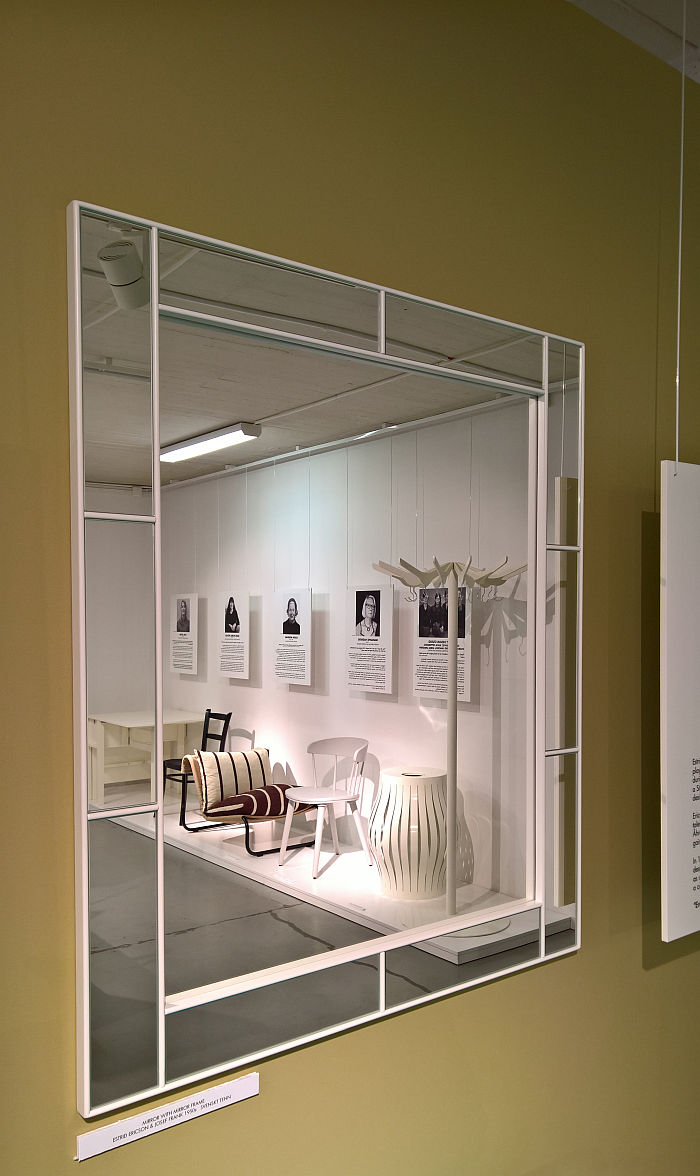
While it is inarguably so that in the later decades of the 19th century and early decades of the 20th century, that period when furniture design was increasingly becoming a profession for the masses rather than a craft for the few, meaningful opportunities for women were hard to come by, there were successful women designers; something the Kunstgewerbemuseum Dresden's exhibition Against Invisibility – Women Designers at the Deutsche Werkstätten Hellerau 1898 to 1938 neatly underscores with its reminder that around one third of the designers engaged by Hellerau before World War II were female. However, in the years since the war the trace of those early female furniture designers has became ever harder to locate.
Female Traces is an invitation to not only isolate and explore some of those less visible strands, but to reflect on and instigate a discussion on the why and wherefore.
To explore the biographies of those whose popular visibility has slipped, including, for example, a Sonna Rosén whose Solfjädern chair from 1948 was, arguably, one of the first chair designs aimed and the elderly outwith a purely medical context, and simply in context of the realities of ageing; Kerstin Hörlin Holmquist who in addition to creating numerous post-War collections for Nordiska Kompaniet also cooperated with Kooperativa Förbundet, the Swedish cooperative association, and contributed to the furnishing of numerous Swedish embassies; Brita Åkerman who in 1944 became the founding head of the Swedish Craft and Design Association's Home Research Institute, which sought to rationalise and optimise the home, including considerations on interior design and furniture.
To reflect on the biographies of those whose popular visibility is often partly, largely?, obscured by a popular focus on a male partner; aside from the aforementioned Ray Eames, Female Traces also highlighting the importance, the urgency, of better understanding the work, the contribution, of a Lilly Reich, a Grethe Meyer or an Aino Aalto.
To discuss the consequences of the loss of such biographies. For while male designers from days of yore have also slipped into invisibility, the relatively lower number of female designers from decades past means that, in effect, every female name, every female contribution, that history forgets leads to an ever greater distortion of the (hi)story of furniture design than forgotten male names**. And because design isn't about inspired moments of genius and a few universally recognised objects, but rather is a continual ongoing process, an ongoing process of inspiration and informing against evolving social, cultural, technical et al realities, in order to have a probable and realistic understanding of design (hi)story we need to have a probable and realistic visibility of female designers. Otherwise we simply cannot have the whole history.
Do we need the whole history?
Yes!!! Or at least as full as a (hi)story can ever be.
Because?
Because, as Adam Michnik teaches us, “thinking about history is simply part of reflections about the present and the future”1
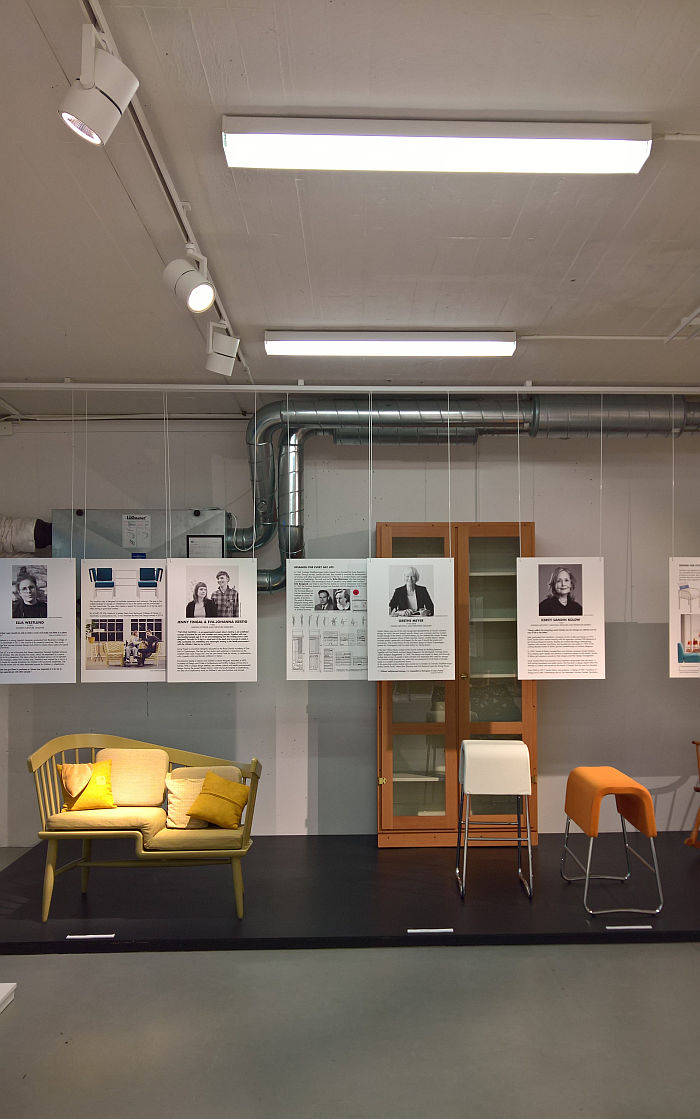
As previously noted in these dispatches, whereas on our annual #campustour the female:male ratio at any given design school is ca 50:50, this parity isn't reflected in the visibility of female designers in the contemporary design industries, and certainly not the contemporary furniture industry: a quick glance at any given contemporary furniture manufacturers' home page invariably revealing a sea of male faces. Only very few matching the 30% female designers the Deutsche Werkstätten Hellerau managed a century ago.
A state of affairs which really, really, "det är inte tillfredsställande"
And poses the very necessary question as to how it can altered.
A question Female Traces doesn't answer, but, with its honest reflections on itself, and the reflections that reflection allows on how the century past has developed, does challenge all involved in and with furniture and furniture design to work towards answering.
Challenges furniture manufacturers to reflect on their commissioning and employment processes, to question if there is an inherent male bias in their processes and/or tendency to commission female designers for colours, fabrics, cushions, as opposed to for furniture projects. And also challenges them to be open and transparent about their own in-house design and product development teams, which they all have, and many of whom are female. Hidden, as it were, in full view. Including being hidden from future understandings of our contemporary furniture design, how often do we look back today and find an inter-War or Mid-century object listed as being an "in-house" design, and no realistic chance of ever knowing more than that?
Challenges designers to be more open and transparent about their teams. One or two names may appear next to a product in a catalogue, which is OK, that's marketing, but only rarely are the one or two names 100% responsible for the product: all major international designers have an in-house team and/or a circle of freelance designers who assist them in the development of their projects. Yet only very, very few designers name their teams/freelancers on their own home pages. And many of the team/freelancers are female. Hidden, as it were, in full view.
Challenges larger, more illustrious, museums to reflect on their own collections, to carry out their own gender audit, to question the collection strategies of the house under previous regimes, the collection strategy of the current regime, to question the probability of their own collection as a document of the (hi)story of design it claims to represent, to reflect on which items make it from the magazine to the permanent exhibition, and why.
Challenges design schools to reflect on the (hi)story of design they teach, on the examples of designers/projects they recommend as exemplary, the design theories they present for discussion, the books they recommend, the guest lecturers they employ, the understanding of the design profession they mediate.
Challenges the media to not necessarily focus more on female designers but be aware of the gender mix inherent in that which is presented, be that at a museum or trade fair, to question the probability of and reason for that mix, and to understand that manufacturers portfolios and design museum collections and exhibitions may be inherently imbalanced. And yes we understand ourselves as having to accept this challenge.
Challenges you, dear reader, to reflect on the probability of the gender mix you are presented with in terms of furniture design, both historical and contemporary. To ask if that which is presented to you appears probable, balanced, and if not to question why not, to research and not just accept. And which, yes, is a challenge we'd happily extrapolate into all areas of contemporary life.....
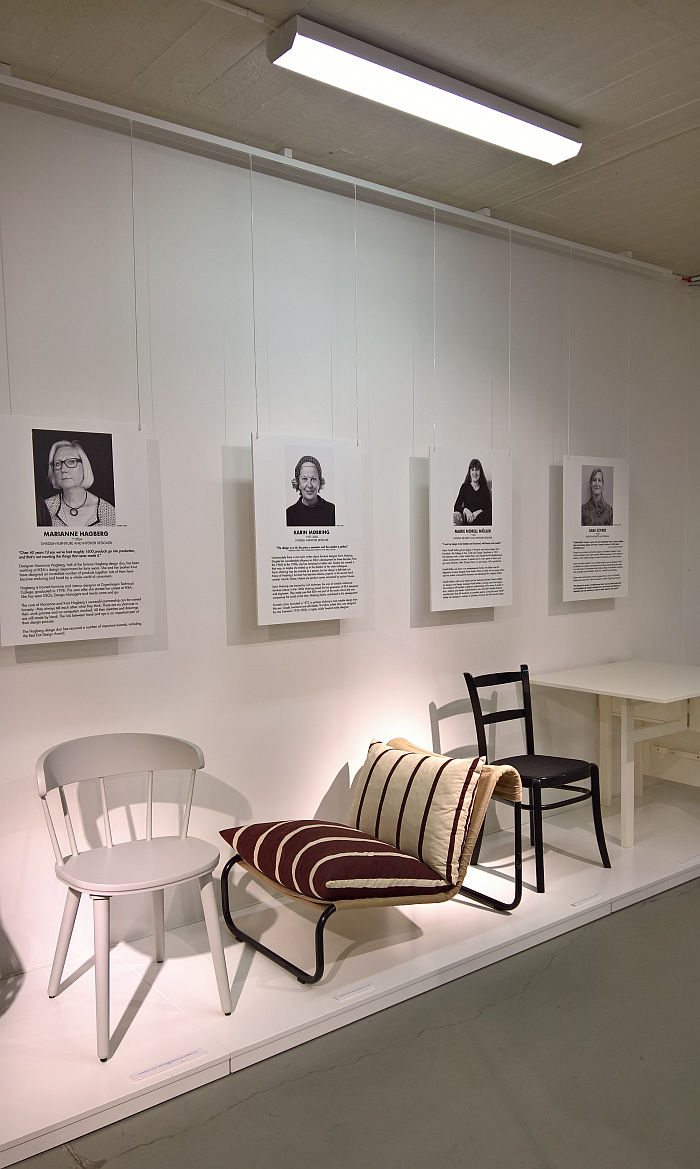
Presenting some 40 of the 80 female designers in the collection, the traces of the rest not being ignored, that would be way to ironic, rather the likes of, for example, Karin Thyrefors, Lisa Johansson-Pape or Kajsa Kelly are to be found in the permanent collection exhibition next door, alongside further examples of works from some of the 40 designers featured, and thus in context of the period they arose, Female Traces is, for all that it challenges the viewer, an unchallenging and well paced presentation which provides the time and the space necessary for your own reflections, not least through the absence of many female designers one may have expected to find in a furniture design museum collection. Low as the Museum of Furniture Studies female headcount may be, it is in no way a collection of the usual suspects, much more, and for all through its Swedish/Nordic bias, is a collection of many designers, we imagine, aren't to be found elsewhere, and thus of unfamiliar biographies which help sharpen the focus.
And also provides the time and space necessary to consider the exhibited works. For while the works aren't the principle focus, they should, must, be explored and assessed as the works they are. It is, after all, a Museum of Furniture Studies. Amongst those works that were new to us, we were particularly taken by, and amongst others, Sonna Rosén's Solfjädern chair, Marit Stigsdotter's Sgabello Stool, Kerstin Hörlin Holmquist's Stora Kraal and Karin Mobring's Krumelur, all, we add, taken by without having sat in/on, and thus without being able to make any comment on the seating quality.
While there are people who will consider an exhibition with a focus on female designers as in some way ghettoising the female designer, presenting the female designer as an oddity, something that stands in contradiction to some natural law, something that needs to be considered individually of design by men, that would be be to not only misunderstand Female Traces, but to approach it from the wrong angle, to focus on the featured designers, rather than the featured designers as conduits through which to reflect on and discuss wider questions of the female traces in furniture design past, the female traces in furniture design present, the female traces in furniture design future, of the importance of museum collections as depositories and reserves of furniture design's history and sources of inspiration for furniture design's future. And for all to ask, what will our contemporary museum collections tell future generations of our contemporary furniture design?
Female Traces runs at the Museum of Furniture Studies, Magasin 6 - Frihamnsgatan 50, 115 56 Stockholm unti Sunday May 31st.
* From our notes it is sadly not clear who it was, we think we know, all logic pointing to one designer... but we aren't 100% certain and so to avoid false attribution aren't naming them.
** As ever, gender isn't the only context in which to reflect on the probability of design representations past, present and future, nor has it a superiority or primacy over any others. Is however the subject of Female Traces
2Adam Michnik, The Dispute over Organic Work, 1975, reproduced in Letters from Prison And Other Essays, University of California Press, 1987
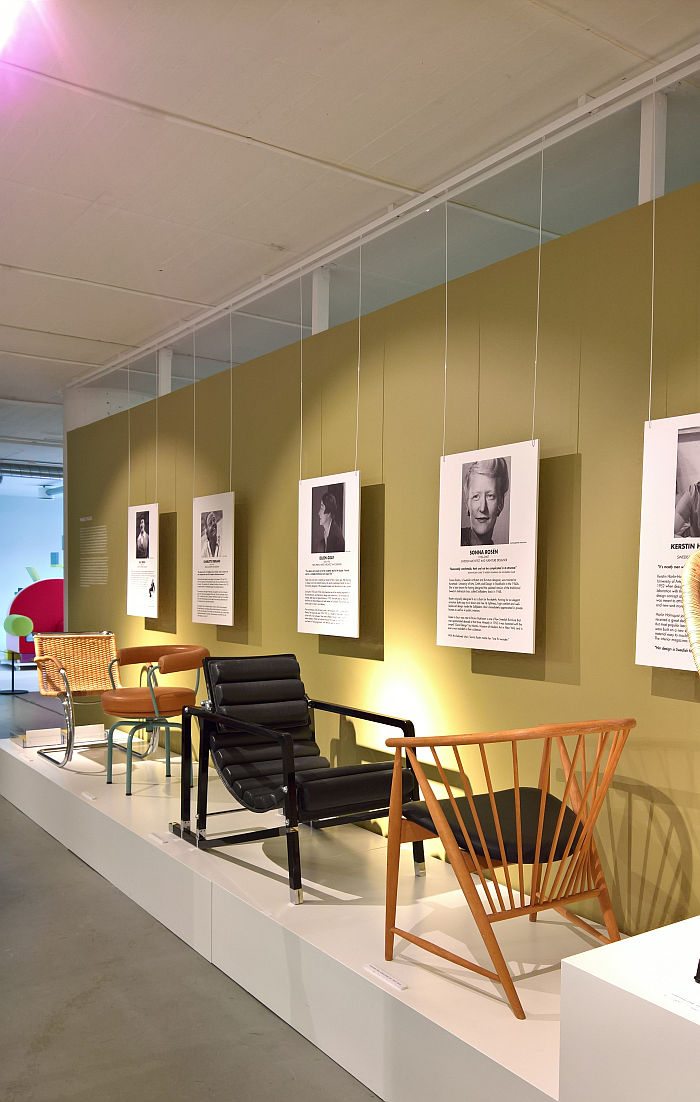
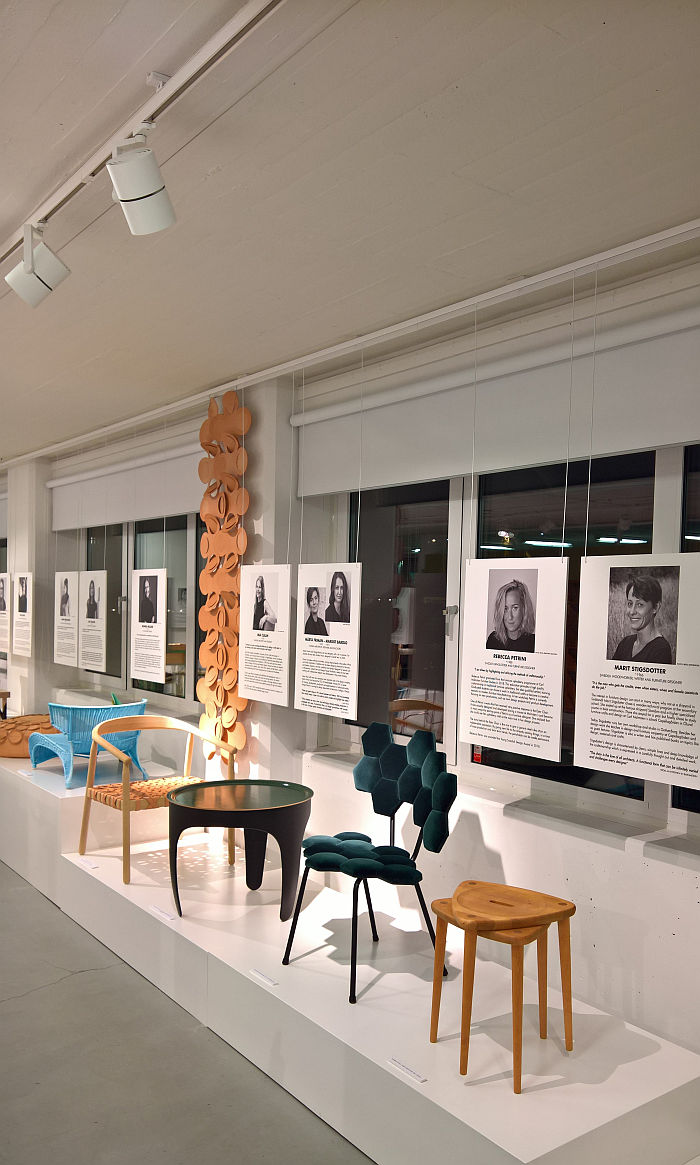
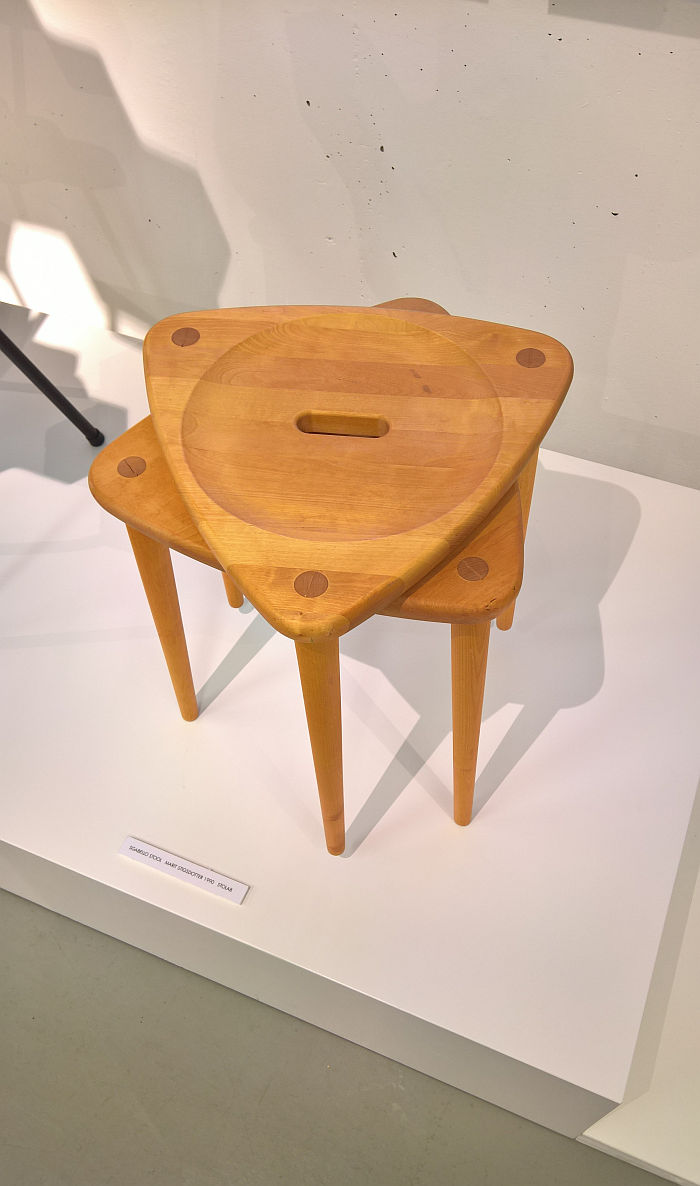
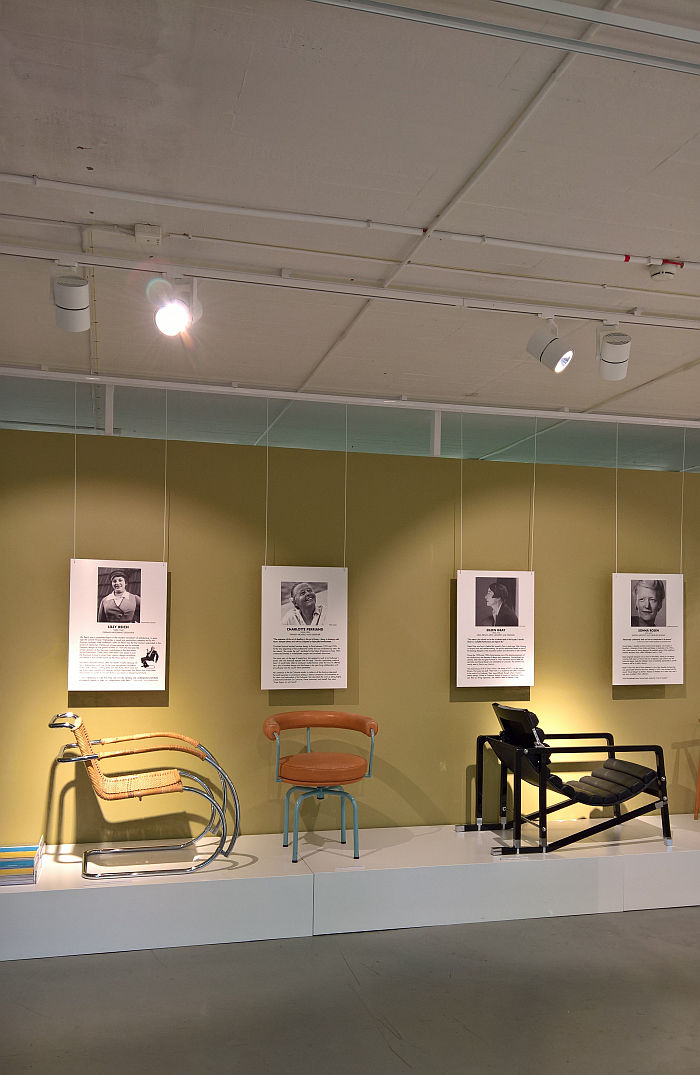
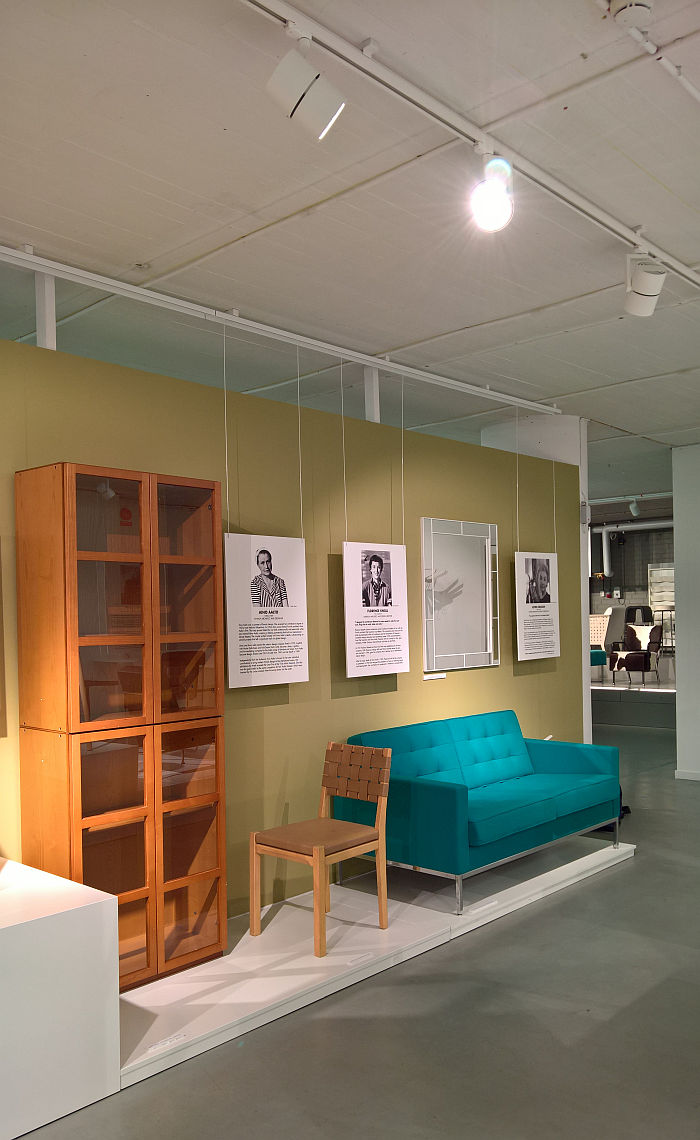
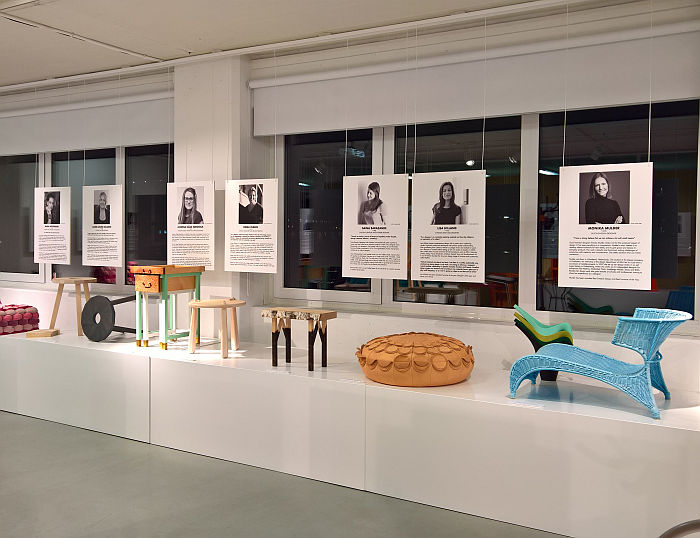
Full details, including the complete list of all designers represented in the collection, can be found at www.mobeldesignmuseum.se